A Voyage into Vermouth
Explore its history, production and versatility
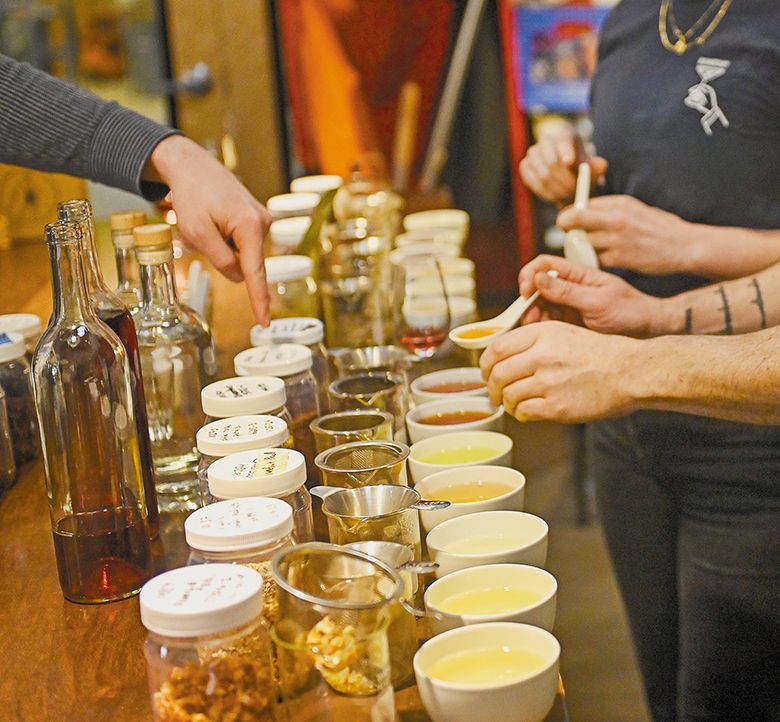
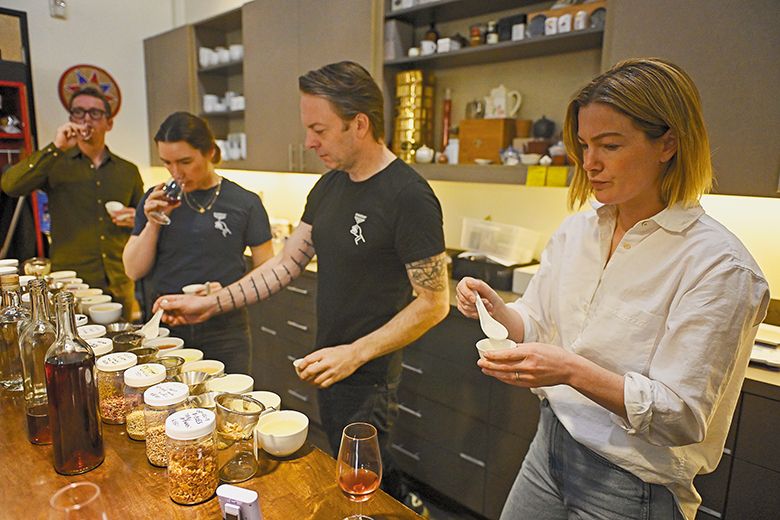
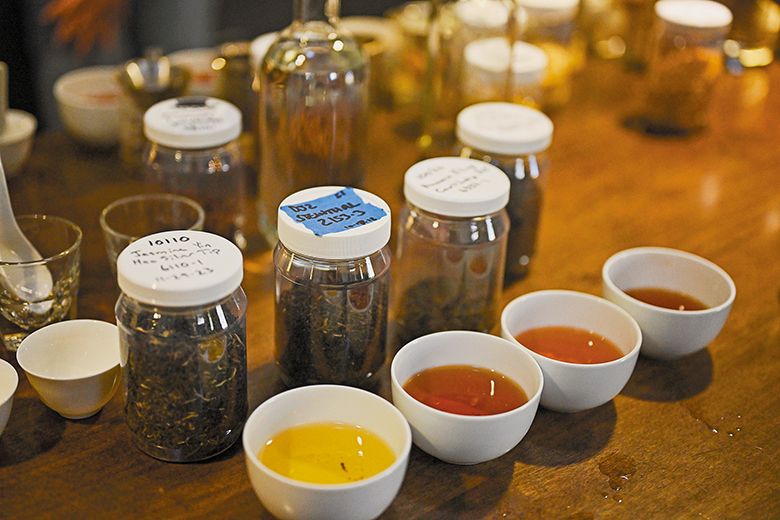
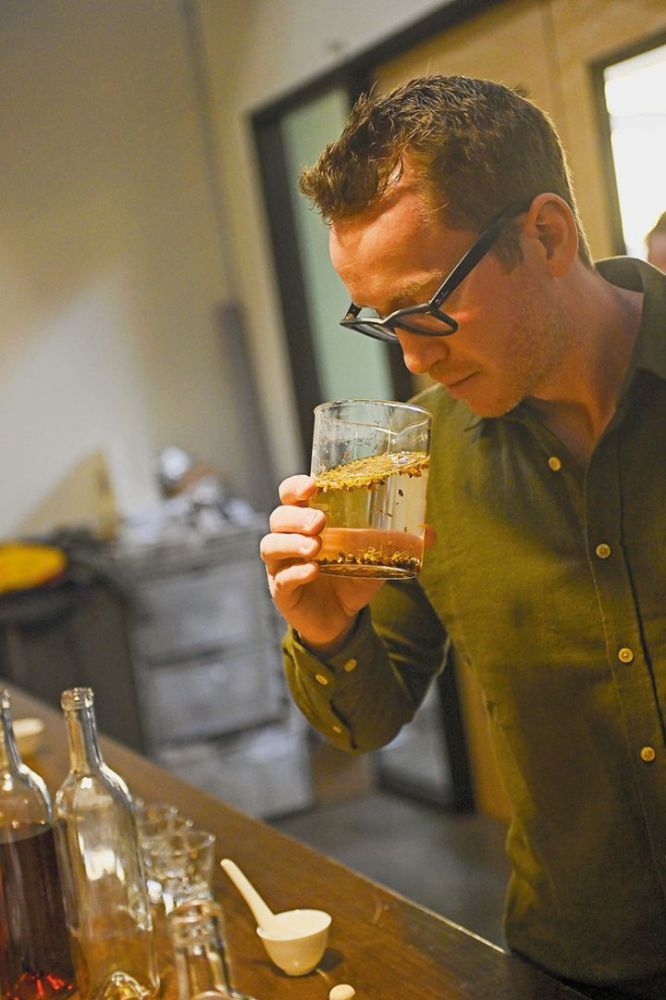
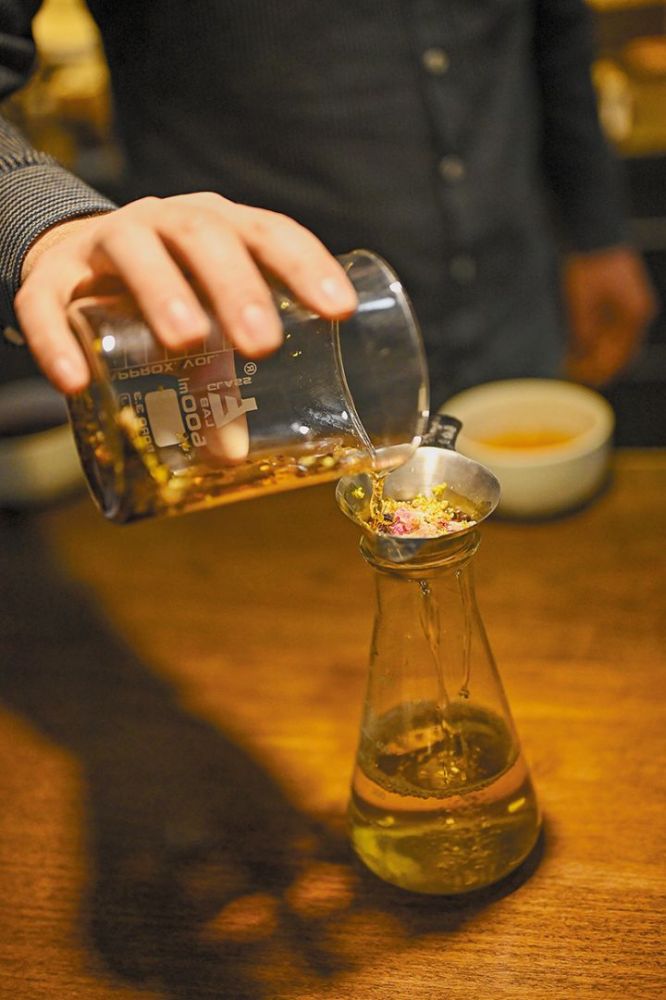
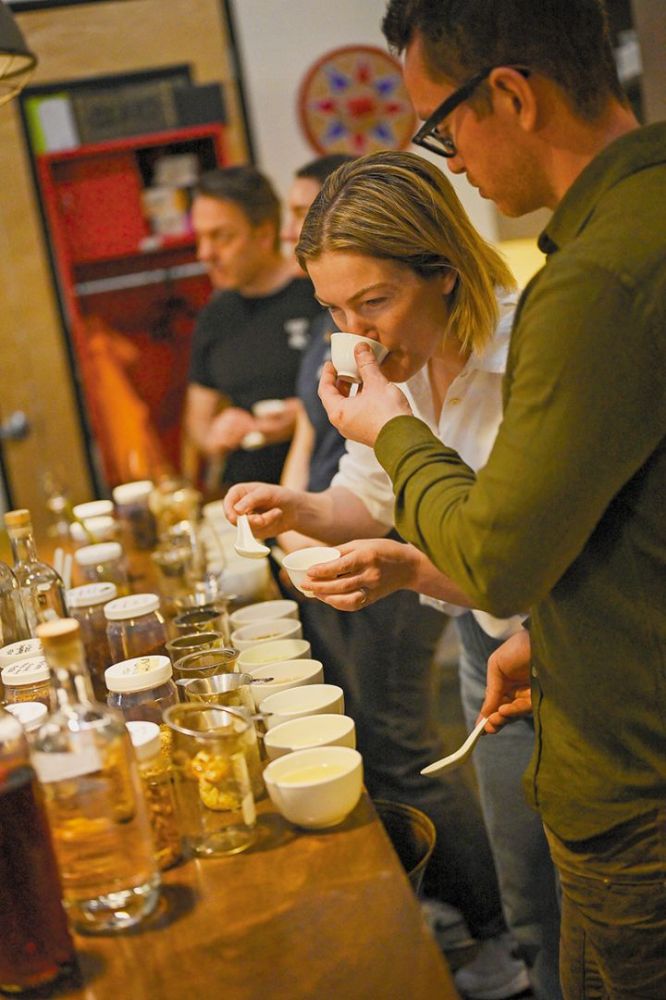
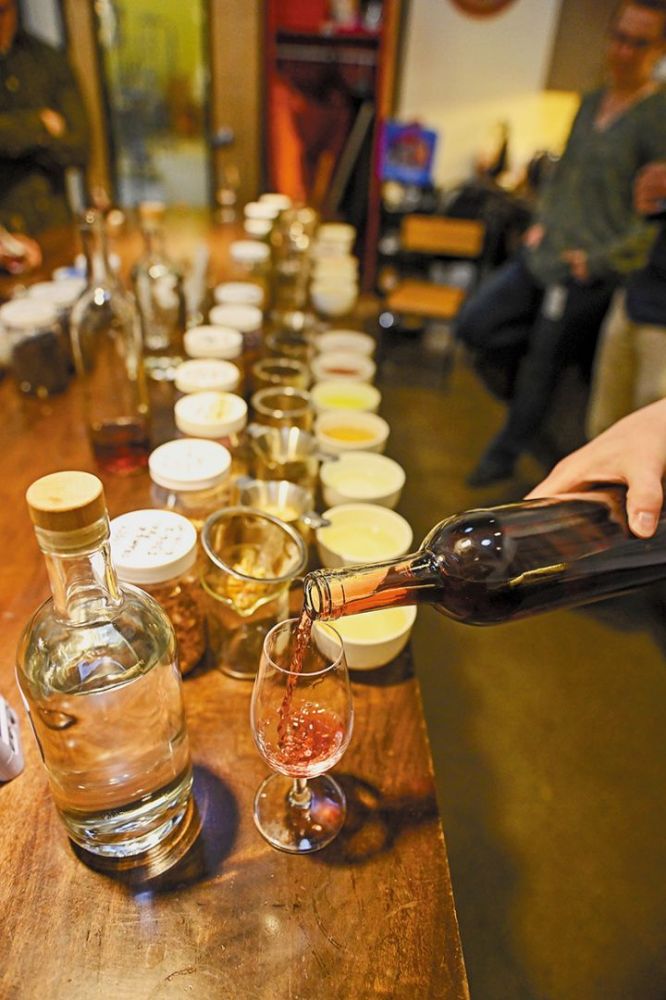
By Greg Norton
What’s both sweet and bitter?
What’s a cocktail ingredient but also a stand-alone beverage?
What’s ancient, yet trendy?
What’s an internationally mass-marketed product and a bespoke, local treasure too?
The answer lies in that dusty green bottle near the back of my liquor cabinet.
It’s vermouth. And, it’s exploding in popularity.
Vermouth’s global market share is predicted to increase significantly in the coming years, according to a 360 Research report published last fall. This is driven, in part, by the growing interest in craft cocktails. Vermouth is also gaining popularity with people seeking no- or low-alcohol options who enjoy a simple vermouth cocktail or spritz as a refreshing pre-dinner aperitif. Oregon has emerged as a center of vermouth innovation as producers present an assortment of styles informed by tradition while inventively expanding the category.
Instantly, I felt eager to learn more about what’s in my dusty, green bottle.
Vermouth– what IS it?
Vermouth is simply an aromatized, fortified wine. Three essential elements comprise its recipe: a base wine; a fortifying spirit; and a flavorful assemblage of botanicals and sweeteners that might include dried and fresh herbs, flowers, barks and spices.
The classic products from France, Italy and Spain dictate the two common style categories. Dry versions are lighter in color, although “white” vermouth may also be sweet. “Red” versions are almost always sweetened, often with caramelized sugar, enhancing the color as well. Formulations for both dry and sweet traditionally begin with a straightforward white wine. Neutral grape spirits increase the alcohol by volume, or abv, to around 17 percent. The blend of botanicals chosen for their aromas and flavors is usually a closely guarded secret, although traditionalists demand the inclusion of wormwood (artemisia absinthium). Wermut– the German version of the herb’s name– is considered a source of the very word “vermouth.”
This backdrop of the vermouth “canon” is just the beginning. While consistency remains paramount for large, international brands, the many possible choices within each of vermouth’s three ingredients present a blank canvas for imagination. Here’s where Oregon vermouth producers express their originality.
“The creativity and the formulation part captivated me,” says Patrick Taylor, who makes vermouth under the Cana’s Feast Winery and Hammer & Tongs labels. His deeply-colored and flavorful Chinato D’Erbetti (for Cana’s Feast) is based on Nebbiolo, the Barolo grape of Italy’s Piemonte (Piedmont), inspired by traditional after-dinner versions from that region. Taylor’s enthusiasm led to his vermouth-centric Hammer & Tongs brand. It contains two versions with packaging that playfully embraces the drink’s medicinal history. L’Afrique is a rich, red rendition while Sac’Résine’s resinous sweetness places it somewhere between the two traditional styles. Taylor explains with winemaking “we have this beautiful synergy with Mother Nature, and we’re working with what she gives us.” When crafting vermouth, however, he is “very hands-on, directing the final outcome.”
Vermouth– what WAS it?
People have infused various edible plants into fermented juice for millennia, prompting anthropologist Patrick McGovern to describe vermouth’s prototypes as the world’s oldest alcoholic beverages. The murky 10,000-year history began in China and the Middle East. Archeological evidence also reveals the steeping of herbs into fermented beverages in Central and South America at nearly the same time. As travelers along the Silk Routes (or Silk Road) carried exotic spices from the East to the West in the centuries leading to the Common Era, beverages evolved more closely resembling modern vermouth.
Using herbs and spices (including wormwood) to make medicinal draughts was codified by the ancient Greeks shortly after the time of Jesus. During the following centuries, citizens of the Greek and Roman empires drank aromatized wines for pleasure and as preventive medicine. By the 16th century, alchemists and healers had concocted a myriad of blends believed to aid in digestion and repel everything from skin rashes to the Black Plague. Soon afterward, aromatized wine’s two tracks leading to the pharmacy and banquet table began to diverge.
The global supply chain for spices had developed sufficiently by the 18th century, allowing Western aromatic wine recipes more exotic ingredients at greatly reduced costs. Italian distiller Antonio Benedetto Carpano took full advantage when creating what is regarded as the first commercially available vermouth (he called it ‘wermut’) at Turin in 1786. His success encouraged others. The ensuing years spawned the emergence of European brands we recognize today, including Cinzano and Noilly Prat.
Cocktail Culture
European vermouth landed on America’s shores in the mid-19th century, coinciding with a growing interest in cocktails (beverages beyond whiskey and ale). Vermouth found its place in the straightforward “vermouth cocktail” (often a pour of straight vermouth with a dash of bitters and an olive or citrus twist), along with the martini and Manhattan. As in our own time, variations were abundant and documented in the numerous cocktail books and bartender’s manuals published well into the 20th century.
Before long, U.S. domestic production began– only to be interrupted by Prohibition in the 1920s. American production resumed after Repeal and was further fueled by anti-European sentiment during World War II. This led state-side producers to pursue a higher level that could replace Italian and French imports.
After the war, cocktail recipes gravitated drier– stronger, with less vermouth– leading to its demotion. Vermouth became an anonymous mixer rather than being savored on its own. Recent interest in craft cocktails recalls the pre-Prohibition cocktail recipes that relied on flavorful vermouths. According to Adam Ford’s book, Vermouth: A Spirited Revival, with 40 Modern Cocktails, both the martini and the Manhattan originally called for two parts vermouth to one part gin or whiskey. Modern bartenders and mixologists, as they craft their bartop creations, now pay more attention to vermouth.
Oregon Vermouths
Tasting Oregon-made vermouths and meeting their creators renewed my appreciation for the freedom of expression found in much of America’s wine culture. Experimentation proliferates alongside an awareness of “old world” archetypes.
Interrobang crafts dry and sweet vermouths using local wine and organic ingredients inspired by traditional European recipes. Sweet Vermouth No. 47 takes a German style as its point of departure and includes wormwood along with more than ten other botanicals. Aromas range from minerals and pine to leather and herbs and taste like dried fruits and caramel. Tart acidity balances moderate sweetness. White Vermouth No. 73 is based on a recipe from Southern France with fragrances of white flowers and clean linen and flavors of spearmint, anise, dill and so much more. Both are delicious on their own, yet, would also elevate a cocktail. Their website explains the brand’s name: “Interrobang is a nonstandard punctuation mark used in various written languages and intended to combine the functions of a question mark and an exclamation point:” ‽ It is a “mark above.”
While sampling from several open bottles at my kitchen table, David Patte recalled growing up in France watching the adults enjoy vermouth or Lillet before dinner. His two Sun Break vermouths embrace the Pacific Northwest using a base wine of Oregon Pinot Noir, then fortified with brandy also made from the popular grape variety. His Rosé Vermouth is the drier version with a blend of 17 botanicals. It is pale salmon-colored with spicy aromas and flavors of clove, herbs and pine. Sun Break’s Red Vermouth is sweeter and fuller-bodied, with flavors of cinnamon, roses, candied fruits and baking spices. Its recipe of 20 botanicals includes wormwood. Defying simple descriptions, complex flavors deserve savoring on their own.
Winemaker Graham Merkel and I met in a busy Portland coffee shop one rainy afternoon. Having spent time in Italy while growing up, Merkel makes vermouths inspired by his heritage, past work as a bartender and love of experimenting with flavors while cooking. Buona Notte is an Italian-centric winery located in the Columbia Gorge where he crafts vermouth alongside Sangiovese and Dolcetto. His Tramonto is a semi-sweet vermouth made with Pinot Grigio, fortified with local grape brandy and sweetened with honey from the Mount Hood area. The base wine is a skin-contact “orange wine,” aromatized with more orange-colored ingredients, including turmeric, orange peel and chamomile– among others. Barrel aging is accomplished using a solera system: In the first year, half the wine is bottled, and the other half is returned to the barrels. The following year, those barrels are refreshed with new wine, spirits and botanicals, then half of which is bottled. “You’re getting some of every vintage in there,” Merkel said, “plus the fresh every year.”
In a room resembling a combination commercial kitchen and science lab, I met two cider makers and two bartenders who make vermouth together. Jasper Smith and Ella McCallion, of Son of Man Cider, forged a partnership with Jessica Baesler and Graham Files over drinks at the latters’ Someday Bar in Portland. Our meeting place was Smith Teamaker’s Portland production facility and tasting room. Assisting was Smith’s product development staff: Sara Kaufman, Donovan Eilert and Anthony Frey. The blending team explored a couple dozen infusions– alone and in combination, steeped in water and in spirits– to enliven this year’s Son of Man x Someday Summer Vermouth. Tempranillo, sourced from the Washington side of the Gorge near Underwood Mountain, forms the base wine, joined by apple brandy (befitting a cidery) and local honey. Son of Man and Someday partner to offer two limited-production vermouths each year: Harvest Vermouth and the currently available Summer Vermouth.
Like the Cana’s Feast Chinato, Iris Vineyard’s Città delle Essenze can be considered “vermouth adjacent.” Using a wine-based formula that includes spirits and an herbal blend featuring bitter orange peel, the goal was an Oregon dessert wine paying homage to amaro, the bitter Italian spirit (Campari is the most famous label). Iris’s winemaker, Aaron Lieberman first freezes Pinot Gris juice to concentrate its sugar. After a cold ferment, he adds herbal flavors and the wine is fortified with spirits. Città delle Essenze takes its place alongside wine-based “gin” and “bourbon” in Iris’ downtown Springfield tasting room where you can sample lower-alcohol cocktails combined with wine-based “spirits.”
Creativity in a Glass
The warmer months are perfect for a refreshing spritz of Oregon vermouth with sparkling water, tonic water or sparkling wine. Or add one of these flavorful local vermouths to your next martini or Negroni. Let the creative spirit of Oregon’s vermouth ma kers find its way into your own glass this summer. The possibilities are endless.
Oregon Vermouth Producers:
Buona Notte Wines
Cana’s Feast Winery
The Color Collector
Hammer & Tongs
Harris Bridge Vineyard
Interrobang Vermouth
Kelley Fox Wines
McMenamins
Ransom Spirits
Someday Bar/Son of Man Cider
Sun Break Wine & Cider
Vermouth Cocktail Recipes
Hammersmith Hibiscus
By Tony Tellin, Steve Smith and Mr. P. Andrew Taylor
3 oz. Hammer & Tongs Sac’Résine
3 oz. Smith Teamaker Blend No. 4 Big Hibiscus
Build over ice, garnish with fresh mint sprig.
Laphrique
By Mr. P. Andrew Taylor
1.5 oz. Hammer & Tongs L’Afrique
1.5 oz. Laphroaig 10-year Islay Single Malt Scotch Whisky
3 oz. San Pellegrino Aranciata Rossa (blood orange) soda
Build over ice, garnish with an orange twist.
Earl Argyle
By Patrick Taylor
3 oz. Argyle Winery Extended Tirage sparkling wine (works well with any decent Brut)
1 oz. Cana’s Feast Chinato d’Erbetti
1⁄2 oz. Del Maguey Chichicapa Mezcal
Splash of bergamot syrup*
Serve up in a flute, garnished with a twist of fresh bergamot rind.
*Macerate, reduce, and strain the pulp/juice of fresh Bergamot over medium heat, mix with simple syrup.
Jade’s Ginger Bang
Provided by Interrobang
2 parts Interrobang Sweet Vermouth No. 47
2-3 parts Bundaberg or Gosling Ginger Beer
Serve on the rocks garnished with a lime wheel.
SIP NW Ruby Mint Cobbler
Provided by Interrobang
2 oz. Interrobang White Vermouth No. 73
1/2 oz. amontillado sherry
3/4 oz. wildflower honey syrup*
2 dashes grapefruit bitters
4 oz. Q grapefruit soda
12 mint leaves
1/8 wedge of ruby red grapefruit
Muddle mint and honey syrup in a shaker glass. Squeeze and add the grapefruit wedge, then the vermouth, sherry, bitters and ice. Shake well and strain into a rocks glass, fill with ice and top with grapefruit soda.
Garnish with mint sprigs or lemon slice.
*Combine 1/2 cup wildflower honey with 1/4 cup water, bring to a simmer (stirring), let cool and refrigerate until ready to use. Makes 6 oz.
Greg Norton is a freelance writer with a broad background in nonprofit communications and the arts. He studied journalistic writing through the UCLA Extension and has traveled to wine regions around the world. Greg is a Certified Specialist of Wine and received the Level II award from the Wine and Spirits Education Trust. When not writing about wine, he can be found pouring it in the tasting room at Campbell Lane Winery near West Linn. Read more by Greg at www.onthevine.blog.










